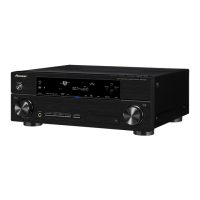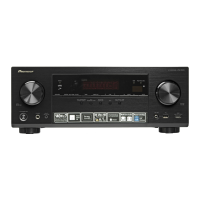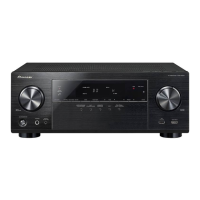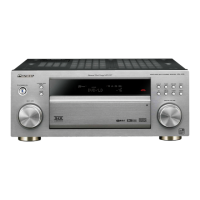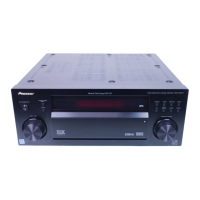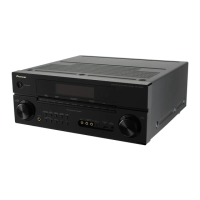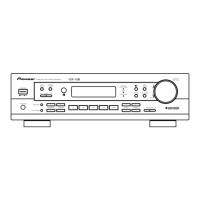The Advanced MCACC menu 10
91
En
English
Français
Deutsch
Nederlands
Italiano
Español
3 Select each channel in turn and adjust the
distance as necessary.
Use / to adjust the delay of the speaker
you selected to match the reference speaker.
The delay is measured in terms of speaker
distance from 0’00-1/2’’ to 45’00’’.
Listen to the reference speaker and use it to
measure the target channel. From the listening
position, face the two speakers with your arms
outstretched pointing at each speaker. Try to
make the two tones sound as if they are
arriving simultaneously at a position slightly in
front of you and between your arm span.
1
When it sounds like the delay settings are
matched up, press to confirm and continue
to the next channel.
• For comparison purposes, the reference
speaker will change depending on which
speaker you select.
• If you want to go back and adjust a
channel, simply use / to select it.
4 When you’re finished, press
RETURN
.
You will return to the Manual MCACC setup
menu.
Standing Wave
•Default setting: ON
2
/ATT 0.0dB (all filters)
Acoustic standing waves occur when, under
certain conditions, sound waves from your
speaker system resonate mutually with sound
waves reflected off the walls in your listening
area. This can have a negative effect on the
overall sound, especially at certain lower
frequencies. Depending on speaker placement,
your listening position, and ultimately the
shape of your room, it results in an overly
resonant (‘boomy’) sound. The Standing Wave
Control uses filters to reduce the effect of overly
resonant sounds in your listening area. During
playback of a source, you can customize the
filters used for Standing Wave Control for each
of your MCACC presets.
3
1 Select ‘
Standing Wave
’ from the
Manual
MCACC
setup menu.
2 Adjust the parameters for the Standing
Wave Control.
• Filter Channel – Select the channel to
which you will apply the filter(s): MAIN (all
except center channel and subwoofer),
Center or SW (subwoofer).
• TRIM (only available when the filter channel
above is SW) – Adjust the subwoofer
channel level (to compensate for the
difference in output post-filter).
1 • If you can’t seem to achieve this by adjusting the distance setting, you may need to change the angle of your
speakers very slightly.
• For better audibility, the subwoofer emits a continuous test tone (oscillating pulses are heard from your other
speakers). Note that it may be difficult to compare this tone with the other speakers in your setup (depending on the
low frequency response of the reference speaker).
2 You can switch on or off the Standing Wave and Acoustic Calibration EQ feature in the AUDIO PARAMETER menu.
See Setting the Audio options on page 67 for more on this.
3 • Since they will be overwritten, you may want to save the standing wave settings made with the Auto MCACC Setup
to another MCACC preset.
• Standing Wave control filter settings cannot be changed during playback of sources using the HDMI connection.
• When Standing Wave is selected for an MCACC preset memory where STAND.WAVE is set to OFF in the AUDIO
PARAMETER, STAND.WAVE ON is automatically selected.
VSX-1020_UC.book 91 ページ 2010年1月7日 木曜日 午後6時0分
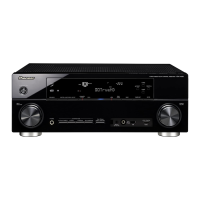
